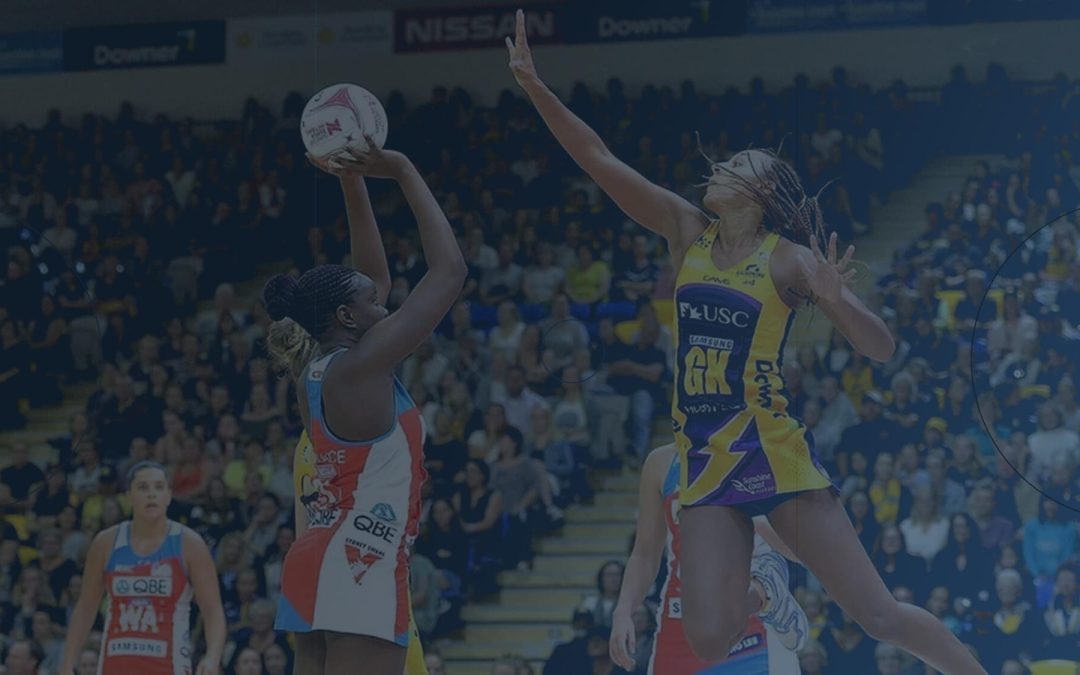If you’ve watched a netball game, you may have wondered about the significance of the alphabets displayed on the bibs worn by the players and the apparent restrictions they face within specific areas of the court. This is all about the netball positions and rules that compel players to do so. In this article, we will explain these elements in a manner that is accessible to all readers, providing a clear understanding of the game. Let’s probe into the details without delay.
NETBALL POSITIONS
In a standard game of netball, a team has 7 players on the court at one time. There are 7 different playing positions in netball, each of which signifies different play areas. They take up the following positions:
GOALKEEPERAllowed in the defensive goal third and shooting circleGOAL DEFENCEPermitted in the defensive and center thirds, and the shooting circleWING DEFENCEPermitted in the defensive and center thirds, but not the shooting circleCENTREAllowed in all thirds, but not in either shooting circleWING ATTACKAllowed in the attacking and center thirds, but not the shooting circleGOAL ATTACKAllowed in the attacking and centre thirds, and the shooting circleGOAL SHOOTERAllowed in the attacking goal third and shooting circle
See how players line up and which areas of the court each netball position is allowed to play in below:
GOAL KEEPER (GK) POSITION AND ROLE:
The goalkeeper (GK) is a vital player in netball, responsible for defending the team’s goalpost. Positioned solely in the defensive goal third, including the shooting circle, the goalkeeper aims to closely mark the opposing Goal Shooter (GS).
GOAL DEFENSE (GD) POSITION AND ROLE:
Goal Defense (GD) is a player who operates in both the center third and their defensive third, including the shooting circle. The GD’s primary role is to closely mark the opposition team’s Goal Attack (GA) to hamper their ability to score goals and create attacking opportunities.
WING DEFENCE (WD) POSITION AND ROLE:
In netball, the Wing Defence (WD) operates in both the center and defensive thirds of the court but is not allowed in the shooting circle. The primary role of the WD is to mark the opposing Wing Attack (WA) player.
CENTRE (C) POSITION AND ROLE
The Centre (C) position in netball is allowed to operate in all three-thirds of the court, except the shooting circles at either end. The primary role of the Centre is to mark the opposing Centre of the other team.
WING ATTACK (WA) POSITION AND ROLE
The Wing Attack (WA) position in netball operates in both the center third and the goal third in the direction their team is shooting. However, the WA is not permitted in the shooting circle and cannot shoot goals. The primary role of the WA is to mark the Wing Defence (WD) of the opposing team.
GOAL ATTACK (GA) POSITION AND ROLE
The Goal Attack (GA) position in netball operates in both the center third and the goal third that they are shooting toward, including the shooting circle. As one of the two players on a netball team allowed to shoot and score points, the GA plays a crucial role in the offense. The primary responsibility of the GA is to mark the opposing team’s Goal Defence (GD).
GOAL SHOOTER (GS) POSITION AND ROLE
The Goal Shooter (GS) position in netball is exclusively allowed in the attacking goal third, including the shooting circle. Alongside the Goal Attack (GA), the GS is one of the two players allowed to shoot at the net to score for their team. The primary role of the GS is to mark the opposing team’s Goal Keeper (GK)
NETBALL POSITIONS AND RULES GLOSSARY:
Here’s a glossary of key terms related to netball rules:
NETBALL POSITIONS AND ROLES |FREQUENTLY ASKED QUESTIONS |
A netball team consists of seven players on the court simultaneously. Each player has a specific position and role within the team.
No, once a player catches the ball, they must come to a complete stop before passing it. Pivoting on one foot is allowed, but lifting or moving the landing foot is considered a footwork violation.
Shots can only be taken from within the shooting circle. The Goal Shooter (GS) and Goal Attack (GA) are the only players allowed to shoot and score points for their team.
A standard netball game is played in four quarters, each lasting 15 minutes. However, the overall duration of the game can vary depending on factors such as breaks, timeouts, and level of play.
Netball is a sport that both men and women can play. While women more commonly play it, men’s netball leagues and competitions are also available.
The post NETBALL POSITIONS AND ROLES | HOW TO PLAY NETBALL appeared first on NetballOne.



